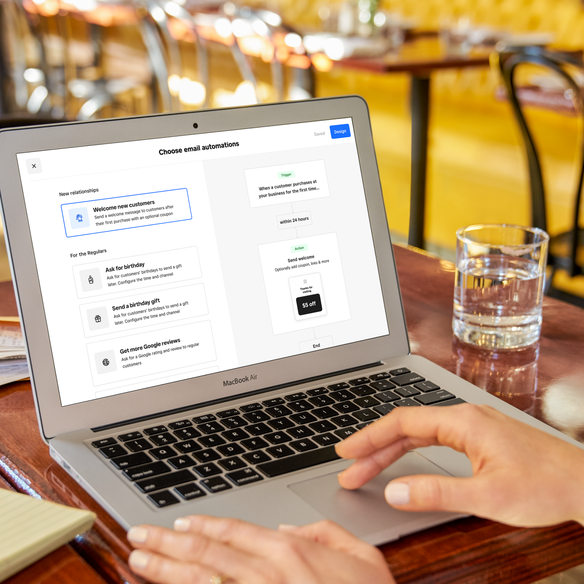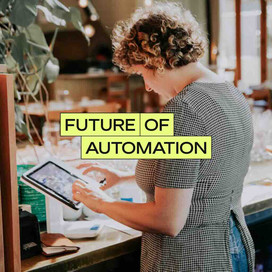Table of contents
As a small business owner, there are never enough hours in the day. With so many responsibilities vying for your attention, spending time on marketing can be one of the first tasks you put off in favor of more pressing obligations.
That’s where marketing automation comes in. Your time should be spent on the most important tasks for the business, while marketing automation takes some of the small, repetitive tasks off your plate. In this article, we’ll answer the question of what marketing automation is and give you some examples that can help your small business succeed in your marketing strategy.
What is marketing automation?
Marketing automation uses software to streamline and automate important, but often repetitive marketing tasks. Without exhausting resources or bandwidth of you or your employees, automating certain marketing tasks can not only save time and money, but can create a more seamless experience for your audience.
For example, if you’ve ever received a personalized email on your birthday for a special promotion or filled out a form on a website and your information was pre-populated, that is marketing automation at work. Automated marketing allows you to make an experience feel personal across all your channels without the added effort.
Marketing automation examples
Marketing automation can seem confusing and complex, but it doesn’t have to be. Using marketing automation to enhance your email and text message marketing campaigns is a common way to get started. Automated and recurring email drip and text message campaigns can expand your business and keep your customers engaged with a simple one-time setup. Square Marketing offers simple automations that can help you attract new customers and increase value through promoting events, new products, and even last-minute deals.
1. Welcome campaign
Send an automated welcome email to your newly subscribed customers within 24 hours of their first purchase. Not only does this make them feel noticed, but it encourages them to come back and purchase from you again.
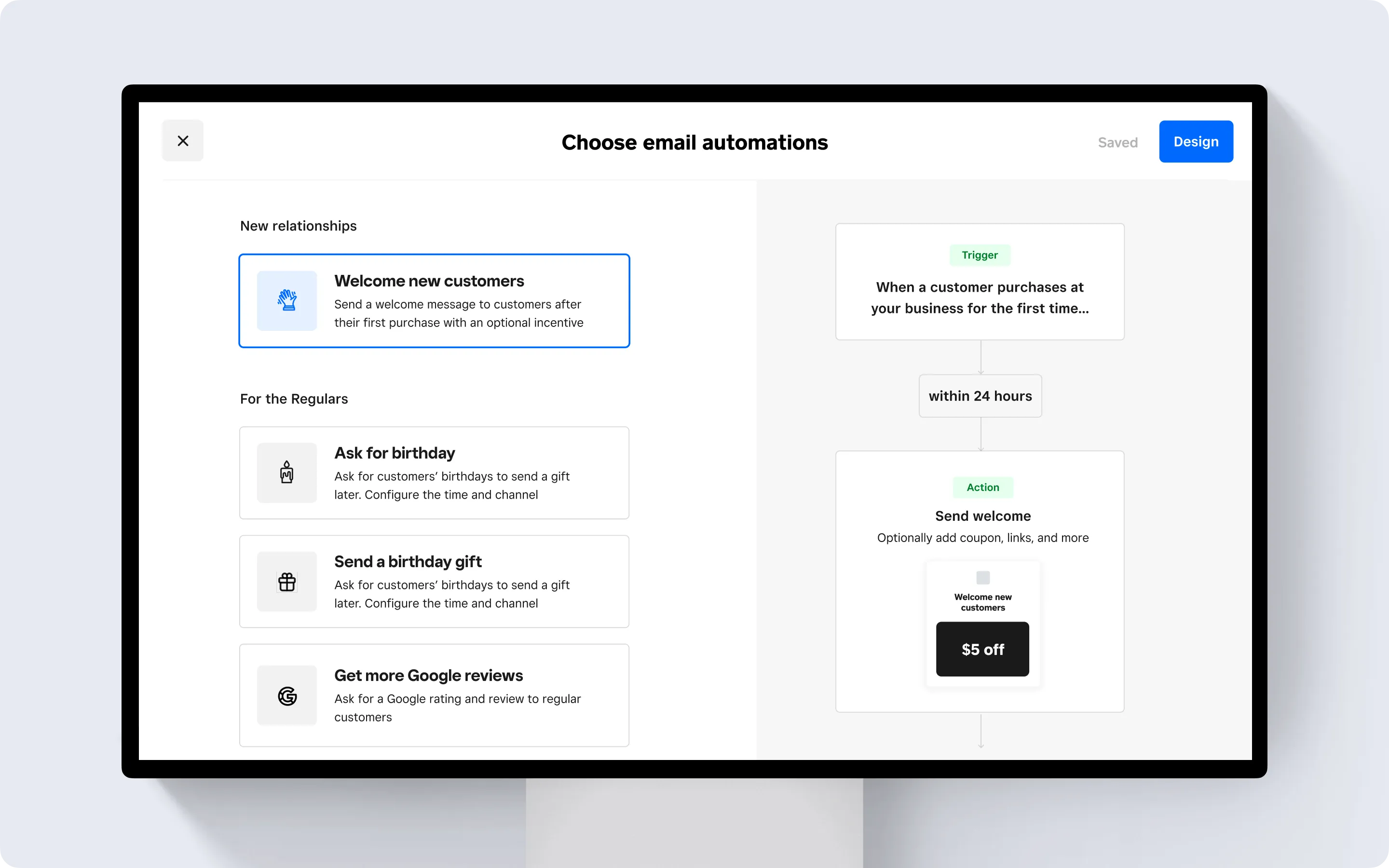
2. Winback
Winback emails are often sent to those customers who haven’t shopped with you for an extended period of time. The definition of a lapsed customer will depend on the type of business you have, and whether you consider lapsed to be three months, six months, or any specified amount of time. These emails can be the little nudge to remind your lapsed customers that you’re still there for them. Use this opportunity to share new products or send a discount code. We’ve found that among Square merchants who send a winback email, 14% of lapsed customers come back to make a purchase.
3. Birthday offer
Celebrate your customers’ birthdays with them! Send an automated email a week before a customer’s birthday to welcome them in to shop and offer a birthday surprise like a discount code or free item. We’ve found that Square merchants who send a birthday offer email increase the recipient return to purchase rate by 72%.
4. Abandoned cart
If someone has added a product to their cart online but didn’t complete the checkout process, send an automated reminder that their items are still waiting for them. Additionally, adding a coupon or discount code can entice them to take the extra step and hit that “complete purchase” button.
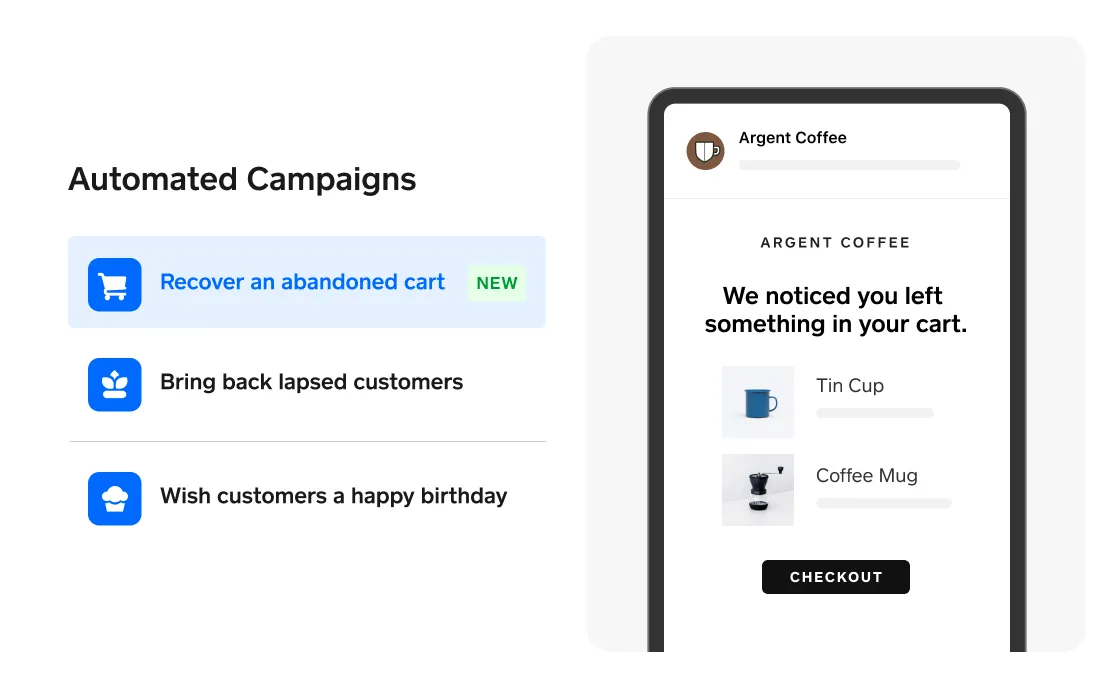
5. Loyalty
Celebrate with your most loyal customers as they reach the next tier in your loyalty program. Automated email or text message reminders can be sent to remind them that they’re nearing their next reward, that they have an available reward to use, or to celebrate the anniversary date of joining your loyalty program. We found that Square merchants who send an offer to loyalty subscribers one week before their enrollment anniversary increases repeat purchases from recipients by 25%.
What does marketing automation do?
Marketing automation can save you time on your day-to-day marketing tactics — and give you more insight into your audience. For example, Square Customer Directory collects information every time your customers shop with your business, allowing you to easily segment your shoppers based on what they purchase, when they last visited your business, and other characteristics that help you better understand them. With this insight, you’ll be able to create a more personalized and relevant marketing plan for your buyer personas.
Automated marketing software can also empower you to use in-depth sequences such as drip campaigns. Since the heavy work is typically done in the initial setup, marketing automation for small businesses can allow you to be strategic in mapping out each digital touchpoint with your audience.
Building out these processes lets you save time and resources so you can focus on your customers’ experience. No matter if you’re sending campaigns to hundreds or thousands of customers, your messaging won’t lose its warm and thoughtful tone with a strong strategy in place supported by marketing automation.
Furthermore, you can integrate these insights to improve your ongoing marketing strategy. For example, each interaction your customers have with an email or text campaign, such as a clicked link, can be used as additional information to help you better target and segment your marketing messaging.
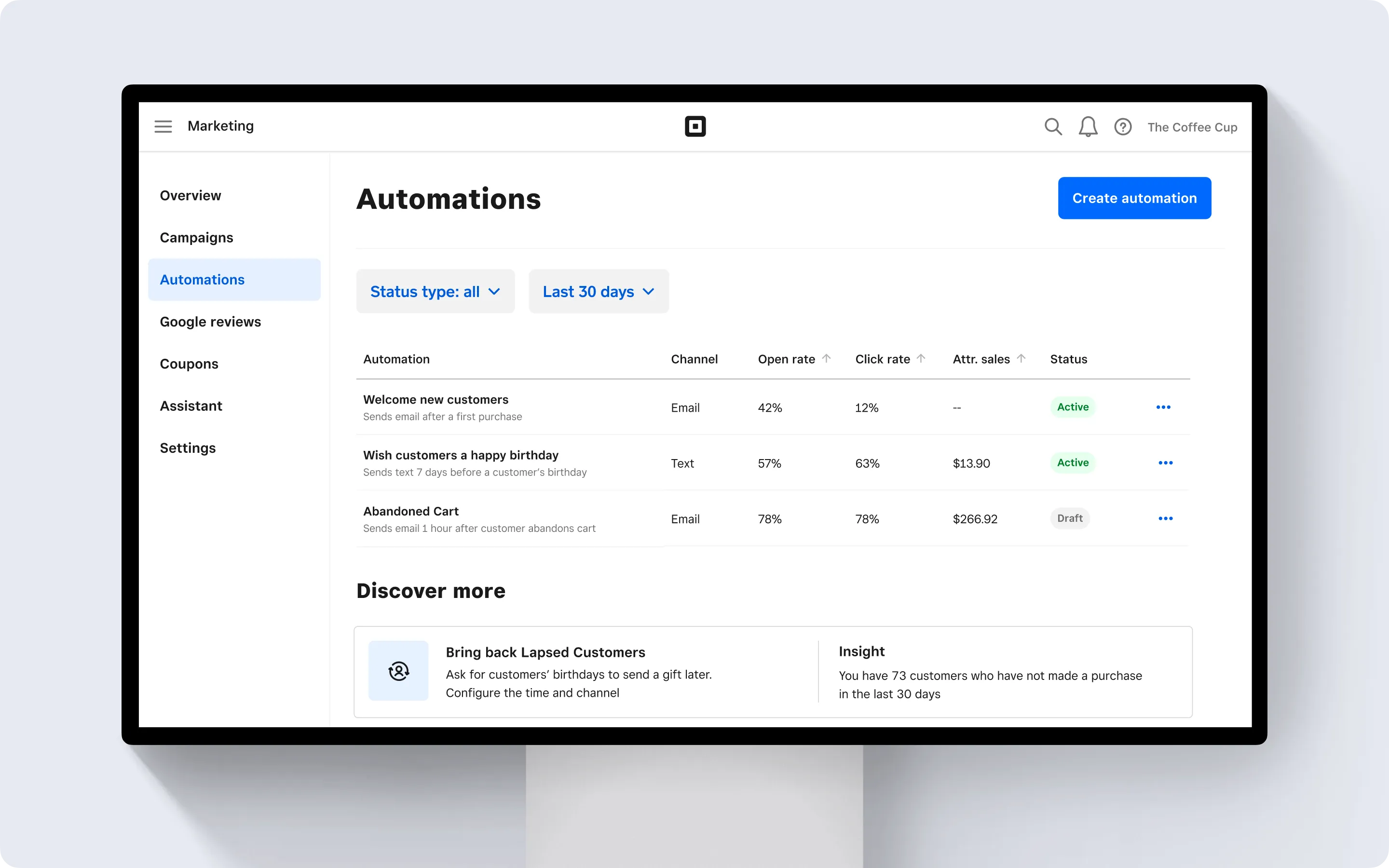
How does marketing automation affect your customers?
Marketing automation isn’t just beneficial to you, it’s beneficial to your customers and their experience with your brand as well. Using your accumulated insights and analytics, you’ll be able to deliver content that feels relevant to each and every customer throughout their journey with your business. Send specific information to your segmented buyer personas and make the most of your interactions with them.
While marketing automation can help create an efficient marketing strategy for you, it’s about providing a unified and cohesive omnichannel experience for your customers. From the first touch, you can build automated steps throughout the journey to make it easier for them to take that next call to action. Whether it’s a personalized email or a pre-populated form on your website, your customers will feel like their experience is tailored to them across every channel.
Marketing automation best practices
Think of marketing automation as a way to give you time to focus on what’s really important and be specific in the content you want to provide to your audience. To successfully establish automated marketing, there are a few best practices you’ll want to keep in mind.
Be intentional
Set definite goals prior to starting with any marketing automation software or tools. Be intentional about these goals and understand what the business strategy is behind each one.
Quality over quantity
Focus on the quality of your marketing communications. It’s not about how much you reach out to your audience, but how much value you’re providing to them. Use high-value marketing content and initiatives to engage your audience instead of sending excessive messages or campaigns to them.
Personalize the interactions
Create personalized buyers’ journeys across each of your various channels to make the journey feel more cohesive and authentic — as if you built your brand just for them. For example, set up an automatic email drip campaign that sends a welcome email to new customers to introduce them to your brand. For the customers that haven’t shopped with you in awhile, set up automatic email or text message campaigns to invite them back with a discount code.
Don’t forget to segment
Segment your data according to buyer behaviors. You may have multiple buyer personas in your audience, and not all of these personas are going to want to interact with your business or your content the same way.
Keep content top of mind
Valuable content is essential when it comes to a successful marketing automation strategy, so experiment and develop ideation and templates for automated email and text message campaigns that feel personal while still having the ability to be easily repurposed.
Analyze and make changes
For each campaign, take a moment to analyze what is going well and what isn’t. Examine how your audience interacts with the campaign and make changes along the way to improve your strategy.
With marketing automation, your small business can execute a successful marketing strategy while not exhausting your bandwidth — or your employees’. Using these examples for your business can make it feel like you’re doing the work of multiple people in no time.
![]()

